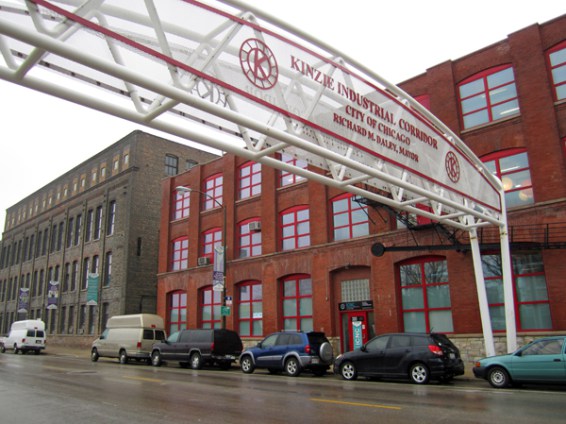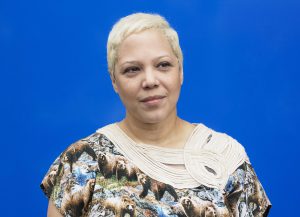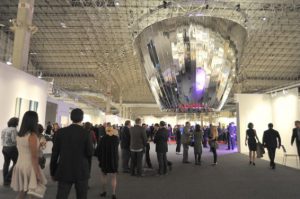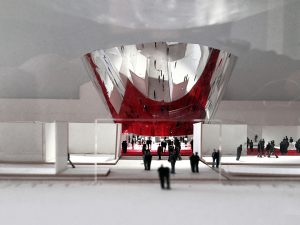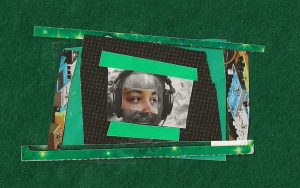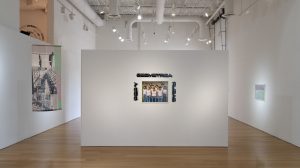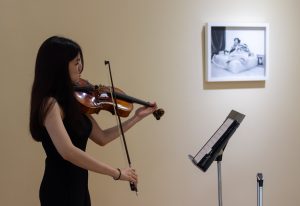Wednesday nights are best spent with nudity, alcohol, and Tombow two-tip acid-free nylon brush pens. Or charcoals. Or whatever your utensil of choice may be. I stumbled across Fulton Street Collective’s BYOB uninstructed nude and costumed Figure Drawing sessions by chance, and by chance I mean attempts to conceal my own awkwardness; after placing an order to go at my local Logan Square coffee shop, there came the dreaded “it’ll be ten minutes,” an inconvenient window of time too long for re-reading the menu and too short for settling down and silently judging fellow patrons. Now, I was presented the options of either pretending to send suspiciously lengthy text messages on my phone or perusing the pamphlets and business cards left on the counter. Flipping through flyers seemed the more natural route, and those emblazoned with figural watercolors caught my attention. Sketchbook and pencils in tow, I now hop onto the Damen bus every week to flex my cross-hatching muscles.
The newly implemented Figure Drawing and Painting program is one of many new opportunities offered by the Fulton Street Collective, an artist incubator hidden among the warehouses of that nebulous area south of Ukrainian Village and north of the United Center. The collective supports the creative community and provides the artist with studio space, gallery space, events, and arts education.
In the first half of my conversation with Joe LaNasa, the collective’s Director and a local musician, we discussed how the prospect of losing his band’s rehearsal space in the corner of a printshop drove him to his current path, how the collective functions, how the Chicago art scene has evolved over the past decade or two, and how vague and confusing the city’s neighborhood boundaries can be. (“East Village” west of the River and outside of New York? Really?)
The Fulton Street Collective’s Spring Open House is Saturday, May 21, from 5pm–1am. The weekly Figure Drawing sessions are held every Wednesday from 6–9pm.
Jenny Lam: I understand that you founded the Fulton Street Collective in 2002?
Joe LaNasa: Yes. I was actually using the corner studio over there as a rehearsal space for my band. That’s how it all started.
JL: Could you tell me a little about your background and what led you to the Fulton Street Collective?
JLN: I’d been a musician playing in local clubs around the Chicago area since the late 90s, and around 2000 or so, a friend of mine, Janine Porter, owned a print business that was in this space, and she was a really cool person, kind of a laid-back hippie, but she also loved to manage bands—I’m a songwriter—so she became interested in my music and wanted to sponsor me along with another friend of mine, Anna Fermin, who was also using the space at the same time. So Anna had a band, I had a band, and we would rehearse in that space.
And then Janine and her boyfriend Don moved to Washington State, and they gave their business to an experimental group of people, a collective of printers, and they called it Bad Dog Printing, and it might’ve been a good idea, but it quickly fizzled out, right down the drain. I’m oblivious to all this, to what’s going on in their business, but I’m coming here and I’m rehearsing every week, and I’m using it as a base for my band and everything, and Anna’s doing the same thing on different nights of the week, and then one day they come to us and tell us, “Well, next week you have to be out of here because we’re going out of business. We basically ran the business into the ground, the one that Janine had built over twenty years or whatever.” [laughter] They ran it into the ground in less than a year, and my friend Janine’s name was still on the lease and everything, and so she was going to be nailed with a lawsuit for breach of contract or something like that, and Anna and I were going to lose our practice space, [laughter] so those two were the big things that motivated us to start the Fulton Street Collective.

We went to the building management and said, “What can we do about this? These people are going out of business. Anna and I have been here for all this time, and we would like to see if we could take over the old lease and start an art collective business,” because we felt like the community was underserved as far as… we felt like there were a lot of artists in the area; Wicker Park was developing then and the whole Ukrainian Village, West Town area over here was developing, and it was developing with a lot of art in mind, a lot of little art groups all over the place, and so we thought that there was enough of a need for an artists’ space, just for inexpensive places for artists to work.
And then it turns out that the ICNC—the Industrial Council of Nearwest Chicago—are the ones who own and manage this building, and their mission is to be a small business incubator, so we said, “OK, well, we’ll be a small business incubator but for artists and creative people,” and so that was it, and they said yes, and that enabled us to start the Fulton Street Collective, save our friends that were on the lease still, and create something good for everybody. It was fun, and at the time our selfish intention was to keep our band rehearsal space, [laughter] so we achieved that too. Honestly speaking, at first that’s what it was; we were going to lose our band rehearsal space.
Anna was really the one who thought of it as a place for artists to work, so I have to give her credit. She has since left the business, but she’s still a member here and she still rehearses here with her band, so our two musical projects still are based here.

So it evolved into what it is now, which is quite different than what it was in the beginning. In the beginning, we just rented space for artists. I think we started with about eight people at first. We put an ad in the Chicago Reader, and we had people answer the ads to come here and use it for their work space, and that was really successful, and a year later we expanded to the third floor.
Last year, sometime after Anna left, I decided that I actually wanted to turn it into something more, because Anna and I first had the idea, the vision, that we would create a community of artists and a place for artists to have everything they needed to develop their practice. But we were only providing a small part of it; we were only providing the workspace. Even then in 2002 when Anna and I started, we said our mission is to cultivate a community and to become part of the greater community. We just weren’t able to execute it back then.
So a year ago, I took my business background and applied it to the Fulton Street Collective and said, “You know, we should be starting with a strategy and developing a plan that makes that strategy a reality,” and so we did. I created a new business strategy that involves not just the studio spaces, but the whole environment, like all the things that an artist needs. What are the things an artist needs? You can speak from your experience as an artist; an artist needs a place to work and a place to show their work, and they need opportunities to show their work.

Translating that to the Fulton Street Collective means that we need to not only provide spaces for them to work, but a gallery and event space for them to show their work, and then we have to fill up the space with events; we have to have opportunities for them to have shows to be in. A lot of the people here are just coming out of school, or maybe they didn’t go to school, or maybe they did a long time ago but they’re just getting back into their art, and they’re just developing it. A lot of the people, just after doing it in their living room or spare bedroom, are now getting more serious about their practice and they need to move into a real studio. What does that kind of person need? They need the space to work, the space to play and show their work, and they need the events and opportunities, and then on top of that I think they also need educational opportunities, ways to continue to get better and better and to branch out into other things and learn about other things. That’s the Fulton Street Collective.
JL: Do you give the collective’s artists a lot of freedom to do whatever they want, more or less? As with the new Figure Drawing sessions, which are run by one of your artists, it seems like you allow collective members considerable leeway to develop their own initiatives.
JLN: Yeah, we talked to all the artists, informally surveyed the people who are already members and a lot of other people in the community like yourself and other people that are doing art blogs, and asked, “What are the building blocks that artists really want?” And the thing that came out on top of everything was that if you’re going to have workshops, seminars, continuing education an artist would need, it was pretty high priority to have the figure drawing. They said that’s a necessary component. That’s the thing a student misses the most after they leave school, that they don’t have as many opportunities for just working in that kind of setting, so that was one of the things we knew we would had to add, even if it was just something that we had to bear the expense of. And then Mary [Blake Donoghue], who is one of the artists here, expressed an interest in doing it and organizing it, so we said, “Yeah, go for it,” and she’s a good example; she took that and ran with it, and now we have a nice program put together for every Wednesday.
JL: What other opportunities do you offer in terms of events accessible to the public?
JLN: I’m glad to say that, since we reenergized our strategy and everything, it’s going really well. As far as last month, every weekend there was at least one event. This month you just missed the 1,000 Paper Cranes event. That one was a good example because we do a lot of those; it was a fundraiser. If somebody comes to us with an idea for an event that’s consistent with our mission, then we’ll do it. That was a fundraiser for the Japanese Tsunami victims, so it’s raised over $3,000, and it was a big show and more of a silent auction; they got a bunch of people to donate different works of art, and those artists were all present that night—it was just last Thursday—and raised a bunch of money for it.
The week before that, the SAIC [School of the Art Institute of Chicago] faculty had a show here, and then SAIC’s sophomores are doing a show here, their final test, and DePaul’s art department did the same thing. They had done that a few years in a row, where the art department had their final test, and so those are great events and those are real consistent with what we do.
We try to have something going on every weekend. The website and everything is new and that’s all since we redid our business strategy and everything, and it reflects the four cornerstones: the working space, the gallery space, the events, and the art education. It’s all there on the website.
And now we’ve got someone besides me just working on everything; the big constraint on our success before was that it was going through me, and I’m a bottleneck, because all those things are separate full-time jobs. It’s just too much to keep up with, and volunteer work only goes so far; it gets a little disjointed that way. So now I finally have someone who’s dedicated to helping with all that, and I expect that everything’s going to do well now.
JL: I do imagine it would be difficult balancing being the Managing Director of an artists’ collective and being a musician.
JLN: Yeah, and trying to have a day job too. I’m trying to make this my full-time day job, but [I] still have to do other things to make money; this doesn’t really make much. [laughter] I’m like a starving artist like all my people are.
But one thing that’s actually helping us a lot, from just a sustainability perspective, is the change we made with the new strategy, with changing from a landlord model to more of a membership model. In other words, it used to be that we’re subletting spaces out to people. Now it’s almost like a health club; you pay a monthly fee, you get to come here and use the facilities, you get to use the studios and the gallery space, and, as a member, you get to have your own shows if you want to and all kinds of other benefits.
But it’s slightly different. We still have the residency idea, where you can just have an exclusive studio for yourself, but now we’re limiting that. Our memberships are open to what we call the standard membership, where you just pay a monthly fee, which is really low—it’s $125—and you’re a member, and as a member you have 24/7 access to this building, to all of our studios, and we have two or three on each floor that are open, so you can just walk in and use a studio.
There’s everything you need: tables, easels, storage racks, and lockers for you to put your paints and stuff like that; you don’t have to carry your easel back and forth, and so there’s a place for you to work. And then, since you’re a member, that means you can participate in shows or you can organize your own shows and have them here. So I think it’s a cool idea, and people are warming up to it; we’ve had a lot of new people sign up, so I think it’s going to be real successful.
And the main thing about switching to the membership idea is that more people can participate. Before, we were limited to the physical space that we had here; we have 29 studios, so once we got to 29 members, that meant we were done and we couldn’t expand any more than that. That’s not true anymore; now we have twenty that are rented out to residents, people who do take out long-term leases, but the other nine spaces are open for common use. It’ll be a while before it gets to be too crowded, because if you’re a member, you’re not in the studio 24 hours a day, seven days a week, so this way more people get to use the space and everything. More participate.
JL: Since you’ve been involved in the art and music scene since the 90s, how have you seen it change over the years?
JLN: Certainly there have been changes in this neighborhood. I remember when I first used to come to this whole West-whatever-you-call-the-greater-collection-of-neighborhoods-around-here, it was pretty scary, because it was a changing neighborhood, and it was really run-down and everything. But then it seems like the city has done a really good job of building things back up again. Right here where Fulton Street is located is an industrial area, and the city’s made this push to build industry in the area.

They didn’t intend for art to be integrated with that; it just kind of happened, and I’m not sure how that happened, but somehow or another, it seems like there are galleries up and down Fulton Street now, little collectives of studios and stuff like that. Over the last ten years that we’ve been here, I’ve noticed that quite a bit.
It seems like they are more well-known for it east of here, [but] with help from people like you and your group, people are becoming aware that the art neighborhood extends this far west now; come up to Damen Avenue because there are a couple of good places here. Even across the street, they rent studios for artists really inexpensively, and we have some people we know who are over there, and I think there are a few places west of here too. If I’m not mistaken, there’s a theatre group, but even further west, along the same east-west streets, I think there a few other places.
So that’s one big thing; the art aspect just infiltrated the neighborhood. In between all the factories and commercial buildings, there are some really creative things going on. Redmoon is down the street, and they’re amazing; they’re more theatrical arts, but they give us a good name. I like to consider us a part of the greater community that includes all those other groups.
JL: With regard to the greater community, is this considered West Town? The Near West Side? What would you call this neighborhood anyway?
JLN: I’m always looking at the map and looking that up. It seems that it’s west of West Loop, and it’s south of Wicker Park and Ukrainian Village. I don’t know which part is East Village and Ukrainian Village. I kind of know where some of the dividing lines are, but I kind of consider it just part of West Loop or West Town or something, but I’m not sure what it is officially. You know how they have official border lines and stuff like that? I don’t know if it makes sense any more. [laughter]
Read PART II of the interview here.
For more information about the Fulton Street Collective, visit http://www.fultonstreetcollective.com.
Jenny Lam blogs at Artists on the Lam. Her Twitter handle is @TheJennyLam.
